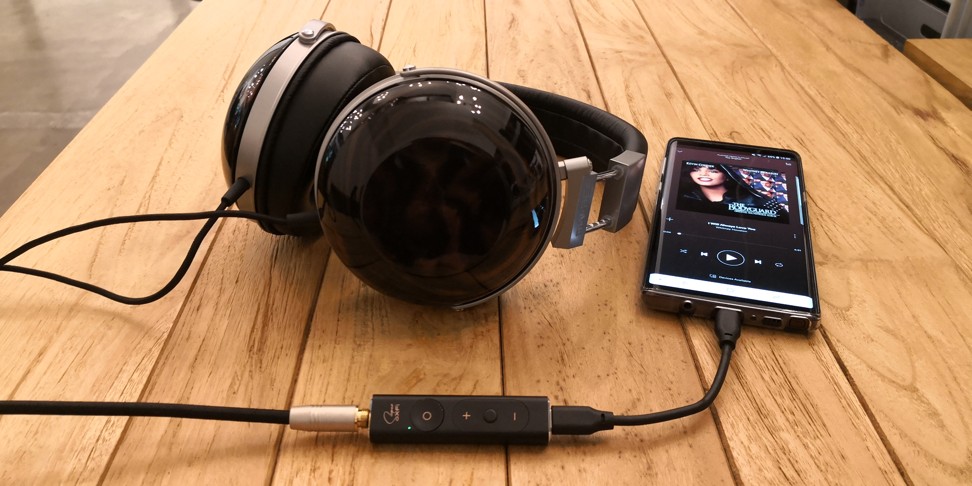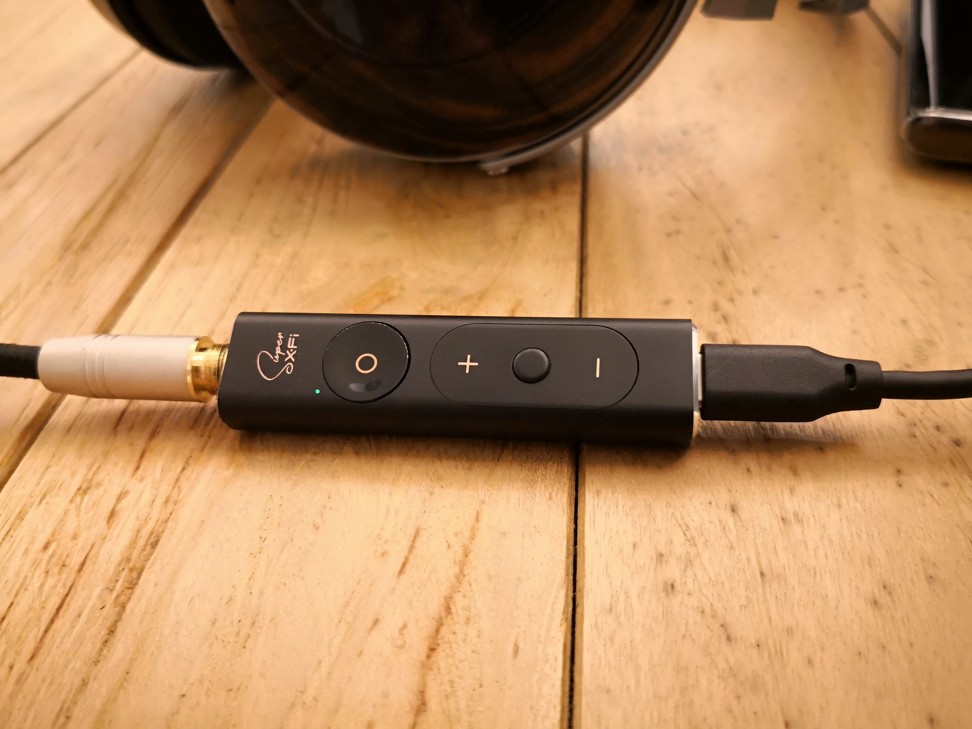
Creative SXFI Amp review: stunning sound that will change your headphone experience
Device’s Super X-fi technology configures itself based on photos of the user’s ears and the headphones they are using, delivering the effects of multi-speaker sound that is like being in a cinema
More than 20 years in the making, the company best known for its Sound Blaster sound cards has released the Creative SXFI Amp, a portable audio amplifier that promises to reproduce the listening experience of a professional studio from your earphones or headphones.
We find out how this claim stacks up.
New Apple Watch can detect you falling, and heart rate irregularities
Hardware
The SXFI Amp comes in an anodised chassis cut from a solid block of aluminium. The circuitry is slotted into the hollow, with a USB-C port on one end and 3.5mm stereo jack on the other. The hardware itself sports just four buttons: two for volume, one to toggle between pause and playback, and one to disable or enable Creative’s sound processing, which the company calls “Super X-Fi”.
To use, you plug the SXFI Amp into your Android device using the included short USB-C cable and connect your wired headphones to it. You can also use the SXFI Amp with consoles such as the PS4 and Nintendo Switch, or even a PC or Mac with the appropriate USB cable that supports USB OTG mode. People with iPhones are not left out as the device, once configured, will work with the handset using the Apple Lightning to USB Camera Adapter, though this isn’t a supported configuration.

Under the hood of the SXFI Amp is an audiophile-grade digital analogue converter (DAC) paired with a proprietary signal digital signal processing (DSP) chip that makes the Super X-Fi magic happen. Creative says it packs five times the computing power of the company’s most powerful sound blaster chip while consuming less than half the power.
It is worth noting that the SXFI Amp supports headphones with high power demands of up to 600 ohms impedance. This means that even if you decide you do not like Creative’s Super X-Fi technology, you can use the SXFI Amp as a vanilla headphone amp capable of driving even studio grade headphones from your mobile device.

Software and set-up
The amp is a plug-and-play USB-powered device, though you need to first update it with information about your physical attributes to experience Super X-Fi. This is done with the free SXFI app from Google Play, which guides you through the process of taking photos of your left and right ears, followed by a frontal shot of your face – you will need someone to help you with that.
This data is automatically transmitted to the SXFI hardware, which uses the parameters to customise the audio for you. The data is also uploaded to the Creative cloud under your personal account, which means you do not have to repeat the photo-taking process if you switch to another smartphone.
Huge screen, better photos, but is that it? iPhone XS Max review
The final step is to select which headphones you use on the SXFI app. There are currently 20 on the list, of which eight come from Creative. There are two generic profiles for earphones and headphones.
The app can be used as an audio player that incorporates Super X-Fi even without the hardware amp plugged in, though it works only with local music files and not from streamed sources such as Spotify or Netflix. Indeed, Creative has devised a nifty marketing scheme where simply plugging in the amp to a friend’s smartphone unlocks the app’s Super X-Fi capability for that device.

Performance
Creative says that Super X-Fi uses the physical characteristics of the user to create the effects of multi-speaker sound from a pair of headphones. It really does deliver in my opinion, offering the depth and realism that comes with being in a cinema.
Listening to some of Michael Jackson’s hits reminded me of my youth when I closed the door to blast them out on my (pretty good) hi-fi system. Movies sounded so much better, while music videos and concert recordings practically induced goose bumps. Audio tunes came across very well too, and nothing seemed to frazzle or throw off the Super X-Fi magic.
You can draw a parallel to using a good pair of noise-cancelling headphones on a plane. They may not seem to do much, but after removing them mid-flight you’re quickly reminded of just how noisy the plane really is. Similarly, turning the SXFI Amp off after a few songs dramatically shrinks the music to between your ears, making it sound dreadful and wrong.
Five cameras – two for selfies – near-instant GIFs: LG V40 ThinQ stands out
Comparisons between headphones have typically revolved around how well they deliver the mids and highs, or how good the separation of instruments and how precise the bass is.
The SXFI Amp and the technology it encapsulates make these far less important considerations, as it aims instead to shift the goalposts of the headphone-listening experience towards home-theatre realism.
Conclusion
After trying out the SXFI Amp with multiple headphones, including the company’s audiophile grade E-MU Walnut reference headphones, I was struck by how well even a pair of S$99 (US$72) Aurvana Special Edition headphones performed.
I would avoid using it with earphones or headphones not on the list though – the generic profile mode just does not sound as good.
If there is one downside, it would surely be the danger of turning up the volume too loud as you lose yourself in your audio experience.
Price: US$149

